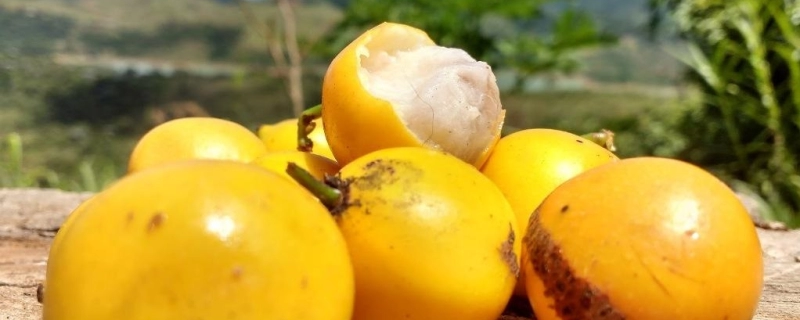Category: Fruits and Berries
Bacupari: Taste, Uses, and Benefits
Bacupai, also known as "bacupari," is a tropical fruit native to South America, particularly Brazil. This small, yellow-orange fruit has a thick, slightly bitter rind and juicy, sweet-tart pulp. Known for its unique flavor and high nutritional value, bacupari is enjoyed fresh, in juices, and in traditional South American dishes. This article explores the flavor characteristics of bacupari, its culinary uses, health benefits, and tips for selecting and storing it.
What does Bacupari taste like?
Primary Flavor Characteristics
Bacupari has a refreshing, tangy taste with a balance of sweetness and acidity, similar to a blend of lemon and mango. Its flesh is juicy, with a slight tartness that adds depth to its tropical flavor profile.
Aromatic and Taste Nuances
Bacupari has a tropical, citrusy aroma with floral undertones. When the fruit is opened, it releases a fresh, fruity scent, making it an appealing ingredient for various dishes and beverages.
Scientific Description of Taste and Aroma
- Aroma: Light, citrusy, with floral notes.
- Taste: Sweet-tart with hints of lemon and mango.
- Texture: Soft, juicy pulp with a slight fibrous texture.

In-Depth Flavor Analysis of Bacupari
Underlying Flavor Notes
Bacupari’s flavor is multi-layered, offering a mix of sweet and tart notes:
- Sweetness: The natural sweetness of bacupari is mild but refreshing, balanced by its acidity.
- Tartness: The fruit has a tangy quality that enhances its tropical character, ideal for adding a burst of flavor to recipes.
- Citrusy Hints: Bacupari has slight citrus notes, making it reminiscent of lemon and tropical fruits.
Impact of Ripeness on Flavor
- Under-ripe Bacupari: More sour and firm, less juicy.
- Fully Ripe Bacupari: Juicy and well-balanced in sweetness and acidity, ideal for fresh consumption or culinary use.
Textural Qualities
The flesh of bacupari is juicy and soft, with a slight fibrous quality, providing a pleasant, refreshing texture. The outer skin is thick and usually not consumed due to its bitterness.
Culinary Uses of Bacupari
Primary Uses
- Fresh Consumption: Bacupari is commonly eaten fresh, offering a sweet and tangy snack.
- Juices and Smoothies: The pulp is popular in juices, smoothies, and tropical drinks.
- Sauces and Condiments: Bacupari’s acidity makes it suitable for sauces, chutneys, and condiments.
- Desserts: Bacupari is used in sorbets, ice creams, and other frozen desserts, adding a tropical flavor.
- Jams and Preserves: Its balanced sweet-tart taste is ideal for jams, adding a bright flavor.
Ideal Pairings for Bacupari
- Citrus Fruits: Lemon and lime enhance bacupari’s citrusy notes.
- Tropical Fruits: Mango and pineapple add sweetness and balance bacupari’s tartness.
- Herbs: Mint and basil complement bacupari in beverages and salads.
- Spices: Ginger and cinnamon add warmth to bacupari-based desserts and sauces.
- Coconut: The creamy richness of coconut pairs well with bacupari’s tangy flavor.
Health Benefits of Bacupari
Key Nutrients and Benefits
- Vitamin C: Bacupari is high in vitamin C, supporting immune health and skin vitality.
- Antioxidants: Rich in antioxidants, bacupari helps protect cells from oxidative stress.
- Dietary Fiber: Fiber content aids digestion and supports gut health.
- Anti-inflammatory Compounds: Bacupari has compounds that may reduce inflammation and support overall health.
- Low-Calorie: Naturally low in calories, making it a light, nutritious snack.
Potential Precautions
- Acidity: Due to its acidity, bacupari may cause mild irritation for those with sensitive stomachs.
- Bitter Rind: The thick rind is typically not consumed, as it is bitter and may be unpleasant to taste.

Tips for Choosing and Storing Bacupari
How to Choose Quality Bacupari
- Color and Firmness: Look for bright yellow-orange fruits that are slightly soft to the touch, indicating ripeness.
- Aroma: Ripe bacupari has a light, citrusy aroma, signaling its freshness.
Storage Recommendations
- At Room Temperature: Store unripe bacupari at room temperature to allow it to ripen.
- In the Refrigerator: Once ripe, bacupari can be stored in the refrigerator for up to a week.
- Freezing: Bacupari pulp can be frozen for later use in smoothies or desserts, retaining its flavor.
Fun Facts About Bacupari
- Amazonian Fruit: Bacupari is native to the Amazon and has been used in traditional diets and remedies.
- Thick Rind: Bacupari’s rind is unusually thick, adding protection but usually discarded due to its bitter taste.
- Seasonal Fruit: Bacupari is typically a seasonal fruit, often enjoyed fresh during specific months in South America.